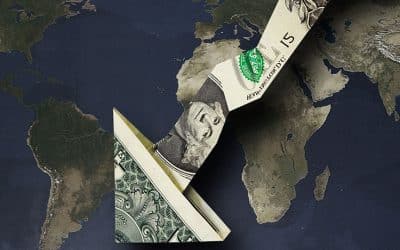Natural capital: a long but successful journey

Redacción Mapfre
Awareness of the importance of sustainable economic growth continues to increase, especially in view of the upcoming COP26 climate change conference that will take place in November. This means that the relevance of natural capital is also increasing, not just in terms of the economy in general but also for overall development of the financial markets.
Although natural capital represents only a small portion of the sustainable (ESG) investment space, it is an area with an expanding significance for institutional investment, both as a way to enhance diversification and for its ability to generate attractive long‑term returns.
Investment in these assets by institutional investors is on the rise, as their interest in the financial value of the natural world grows and they look for ways to incorporate that value into their investment strategies. This is also because in addition to supporting the aim of reducing carbon footprints, investing in natural capital represents a way to protect biodiversity, support sustainable agriculture, and preserve our oceans. All of this is encouraging many investors to enhance their investment style through activities of this type. Although interest in this trend is still in its early stages, it can already be clearly seen across the entire financial spectrum. Not only are we witnessing a phenomenal expansion of innovative financial products linked to the natural world, but we are also seeing the emergence of bank loans linked to sustainability and even new developments in the insurance industry.
For the time being, carbon emission offsetting projects will dominate the introduction of new assets. However, there are limits to their attractiveness, and over time they are likely to be superseded by other products of this type designed for a broader range of investment styles and objectives. Banks are also developing nature‑based approaches by introducing loans linked to sustainability, where the interest paid will depend upon the borrower’s environmental performance. The world’s first insurance policy for a coral reef has also been created to cover a 100‑mile section of the Mesoamerican Barrier Reef System in Mexico. New underwriting niches could soon be developed by offering policies for coral reefs in other locations.
However, developing this market will not be easy, and this asset type will continue to represent a niche option, until performance indicators can be more precisely quantified and larger investment vehicles are launched. Furthermore, demands for improved transparency, responsibility, and metrics will continue to increase for assets in the natural capital class, presenting further obstacles for their expansion and diversification. Finally, the difficulties associated with accurate valuation of natural resources could also hinder development of new financial products, if the work required to overcome these challenges is not duly performed.
In summary, there is not only room for new natural capital assets to emerge, but an economic and financial need for them as well. These products can be used as a way to enhance existing efforts to recover the planet’s sustainability, while also representing a previously overlooked source of risk mitigation, diversification, and long‑term returns. However, there is still much work to be done, not only in terms of environmental, social, and economic policies, but also for the financial sector. Efforts must be made to ensure the existence of an efficient, well‑informed, and transparent market, which is able to operate in a manner that enhances both economic growth and sustainability.
Gonzalo de Cadenas-Santiago, director of macroeconomic and financial analysis at MAPFRE Economics



